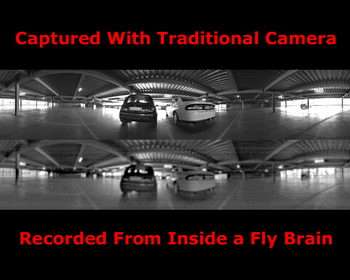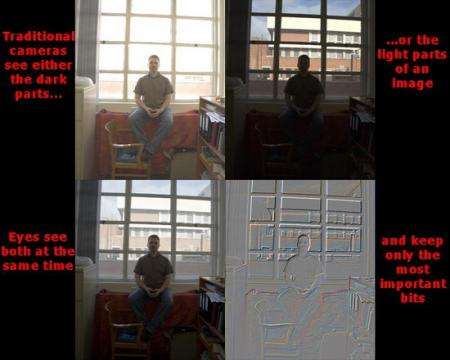Video Cameras Learn from Insect Eyes

The bane of all wedding videos - that picture of the bride in front of the window where her face is so dark that you can't see the features - may soon be a thing of the past.
By mimicking how insects see, a University of Adelaide researcher can now produce digital videos in which you can see every detail. The technique solves a critical problem for surveillance cameras, where the clarity of images is everything.
"When it comes to seeing, even a tiny insect brain can outperform any current artificial system. As we can, they can see detail in light and dark at the same time," says Dr Russell Brinkworth, a postdoctoral research fellow in the Discipline of Physiology at the University of Adelaide, Australia.
Traditional cameras use a single average light setting to control the brightness of an image. This is fine, says Dr Brinkworth, if there are similar levels of lighting over your whole scene. But it's not so good if some parts are much brighter than others.

"In nature, the individual cells of the eye adjust to a part of the image independently in order to capture the maximum amount of information about the scene. This means that even in difficult lighting conditions, such as a person standing in front of a window, you can see both the person's face and the scenery outside at the same time, something a traditional camera cannot do."
By recording from cells in the brains of insects, Dr Brinkworth and his colleagues have shown it is possible to determine exactly how animal eyes work, and to reproduce the process using computer software and hardware.
"It's a fundamentally new way of thinking about vision technology," he says. "Our eyes, and insect eyes, are designed to detect movement. In fact we can't actually see anything that's stationary relative to our eyes. The image in our mind is created by movement - the movement of our bodies, flickering of our eyes.
“By learning from the insect world we will be able to create video cameras that can: resolve detail in light and dark; detect moving objects; rapidly compress and transmit video at incredible speed; and detect and measure the speed of very small objects moving in the distance,” he says.
Dr Brinkworth's software can already enhance existing video footage.
"What we want to do," he says, "is to wire this into existing camera sensor technology - our software would be written to a computer chip that would sit between the sensor and the digital converter."
He is keeping the specifics of the technology close to his chest until a commercial partner is signed up. But the team has already received support from the United States Air Force.
Source: University of Adelaide





















